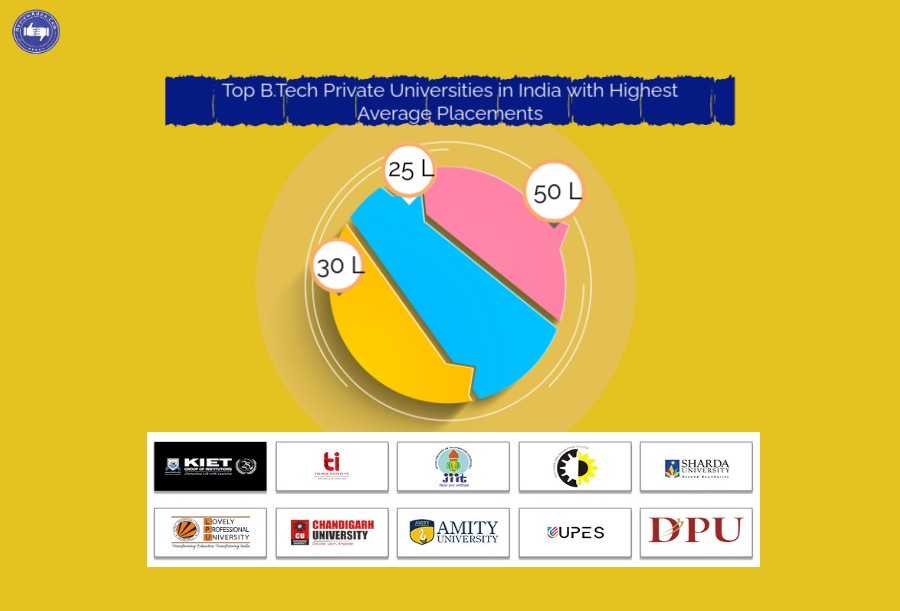What is Spot Round Admission?
Introduction
Admission in the spot round is also referred to as supplementary round or special round admission and is utilized by any institution to fill any open slots after other admission rounds have been conducted. This round occurs after the regular admission cycle of a particular academic year when a given school, college, or university still has vacancies that it wants to fill.
In the spot round, institutional constraints and standard measures can be relaxed or altered in some circumstances, for instance, knocking down the cutoff marks or extending the offer to a bigger pool of students. This ensures that learners who just failed to make the initial list of the universities they applied for or those who could not sit for admission in the regular Universities due to one reason or another benefit.
The spot-round admission process is typically done based on the order of candidate registration, or generally, there is a merit list or ranking system that determines the admission of the candidate. It seeks to prevent the existence of empty spots and enables institutions to admit worthy candidates to occupy the available spaces after adjusting the standards accordingly.
Significance and relevance of spot round admissions in educational institutions
Spot round admissions hold significant importance and relevance for educational institutions, offering several benefits:
-
Optimizing seat utilization: This cycle guarantees that all the available spaces in an institution are occupied, thus avoiding a situation where the institution has some empty spaces. This enhances efficiency in the use of resources and facilities, which will enhance the size of the institution.
- Providing a second chance: The round spot allows any learner who had nearly scored low marks in their admission or any other challenges that may make them miss the opportunity in the regular admission round to try again. It created a chance for qualified individuals to enrol in their preferred course or program of study.
- Widening access to education: Since the spot rounds involve tweaking or adjusting the branding criteria that are usually set in other rounds of branding, these rounds help to increase access to education for candidates who initially did not meet the requirements that institutions had set. This corresponds to the principles of non-discrimination and democratization of education, as more students can be offered opportunities to get a higher education degree.
- Maintaining institutional reputation: As many students become unable to get into a particular campus in regular rounds, filling all the vacancies in the spot rounds also serves the purpose of upholding the standard and image of an educational institution besides enrolling a cross-section of the population. This aspect affirms the institution's commitment to offering education opportunities to deserving individuals.
- Revenue generation: The institution's prospect is that spot round increases appendage numbers for instating and carrying out teaching, learning, and other academic activities, thus improving the institution's treasury through tuition fees and other charges.
- Meeting workforce demands: Thus, the spot rounds can be beneficial in certain fields or programs that do not attract enough students to meet the workforce's needs for certain occupational positions or fields or when certain programs are needed in occupation-specific industries.
In sum, admission against the spot round is crucial to enhance the effective utilization of the limited resources, embrace the opportunities for the eligible candidates, and offer deserving students who may still need to get a chance in the admission round. The former points out that they help to uplift educational institutions, as well as to cultivate their reputation while achieving the goal of seeing and meeting the unsaid needs of students and society.
Understanding Spot Round Admission
Supplementary admission or special round admission is a process through which educational organizations try to fill vacant seats in their institutions after the ordinary rounds of admission have been completed.
The purpose of the spot round admission is twofold:
1. In order to support efficient use of the resources and facilities
-
Through seating capacity utilization, educational institutions can effectively utilize all the available resources as they admit as many students as possible to make the most of infrastructural resources, including classrooms, laboratory resources, faculty staff, and other related facilities.
- This ensures that all prospective seats are utilized and optimally fill the available space in the institution.
2. To provide an additional opportunity for deserving candidates:
-
The spot round is a scenario that gives a raw deal to the students who could have barely failed to make it or had some contingencies during the normal admission processes.
- It enables an institution to accept more students and offer them a better deal by lowering or even removing certain standards, such as academic scores or levels.
- This complies with the concept of successful diversification for the equality of more students aspiring to get into higher education.
The spot round admission process mostly takes place after the normal round is complete and the institution in question has realized that it has some vacancies it needs to fill. The admission and selection procedure may differ from the general policies, but it still works in different ways; it may have its merit list or work on a first-come, first-served basis.
An institution can benefit from a spot round by making better use of its available resources, catering to deserving students who might not have been cut in previous years, and ensuring that all the available seats are filled. This, in turn, serves the institution's growth and acknowledgement.
Process and Criteria involved in spot round admissions
In general, the process and criteria of spot round admissions can be defined with the help of various steps and factors and include the following:
- Identifying vacant seats: Institutions review their capacity and open seats after all the rounds of admission have been filled in different programs or courses offered. This information helps provide a measure for reasoning about the number of seats available for the spot round.
- Modifying eligibility criteria: To liberalise the spot round of admission, institutions can opt to defer or change one or several eligibility constraints. This may involve reducing the minimum score requirements, allowing applications from different categories of students (e.g., students from other states/regions), or using other criteria for qualification.
- Announcing the spot round: Through the advertised spot round, the institution announces details of programs or courses of its choice with available places, changes in eligibility criteria, and application procedures. This information can be in the form of newsletters, via the institution's website, in newspapers, or found on social media pages.
- Application and document submission: The candidates have to apply for the spot round admission before a certain period elapses for them to consider the spot available. They have to produce their academic documents to the institution as per the requirements of their specific school or university, such as their transcripts, test scores, or other relevant documents.
- Merit list or ranking system: Based on the policies of the institution, it goes into a merit list or ranking system, where all the applications for the spot round are evaluated and ranked. This might entail a based-on factor, including performance rates within the course, entrance tests, or other pertinent factors.
- Counselling and admission process: After the merit list or ranking is prepared, the institutions organize counselling or interviews with the students or contenders. At this stage, it is also important to note that candidates may be awarded admission based on rank, preferences, and availability of places in certain programs or courses of their choice.
- Seat allotment and admission confirmation: Admission offers are made to deserving candidates, who are provided with a percentage-wise number of seats. Within the stipulated time, they are required to fill out and sign some documents related to fees and other details concerned with admission.
However, the reader must be informed that the parameters or requirements and process of applying for admissions in the spot round may depend on the general guidelines, rules, and regulations as well as the demand for the particular course or program being offered in any educational institution. Transparency and fairness are part of institutions, particularly when dealing with the admission of students during the spot round.
Importance of Spot Round Admission
Benefits of spot round admissions for students and educational institutions
Spot round admissions offer several benefits for both students and educational institutions:
Benefits for Students:
- Second Chance: Spot rounds can be used as a second chance for students who failed to get a chance in the initial round or who faced issues that were not possible to avoid during the earlier admission process. This gives candidates another opportunity to be admitted to their preferred program or institution.
- Wider Access: By relaxing or modifying certain eligibility criteria, spot rounds open up access to education for a broader pool of applicants. This can benefit students from different regions and backgrounds or those with alternative qualifications, promoting inclusivity and equal opportunities.
-
Flexibility: Spot rounds offer flexibility for students who may have changed their preferences or circumstances after the regular admission rounds. They can explore new options and apply for programs that they may have yet to consider.
- Reduced Waitlists: In the same way, students who got a wait-list status for regular admission sessions see the spotters' admission process as a chance to directly fill the vacancies that come up in the middle of the academic year and not have to wait for the chances to open up again.
Benefits for Educational Institutions:
-
Optimized Resource Utilization: Holding or securing all the resources that are available throughout the educational institutions, such as the classroom, laboratory, lecturers, and other related facilities, can be maximized by filling all the available seats. This ensures the optimum use of their infrastructure, especially the seats and avoids situations whereby their seats are left idle.
- Increased Revenue: These allow for the nomination of extra individuals to join the institutions, thereby providing more revenue in the form of fees and other charges within the institutions to offset expenditures.
- Diverse Student Body: Spot rounds give institutions the opportunity to extend their outreach and increase enrollment of a more diverse student body based on their potential rather than origin, location, or patterns of education. This opens the potential for a more rich academic and cultural experience for students and the community on campus.
- Meeting Workforce Demands: Spot rounds might assist institutions in satisfying clients' demands in certain fields or programs to admit more students, for instance, where skills are scarce in the employment market or in cases where academia wishes to provide a special proficiency or speciality for the job market.
- Reputation and Visibility: Since the values of the fair school spot round admission procedure are high, the educational institution can increase the recognition level among potential students and stakeholders, indicating the proper availability of educational services.
In conclusion, spot-round admissions are beneficial for students and institutions offering education; they help people access education, enhance the efficiency of using available resources, and support the creation of a diverse academic community.
How spot-round admissions contribute to filling vacant seats and ensuring maximum enrollment.
Spot-round admissions play a crucial role in helping educational institutions fill vacant seats and ensure maximum enrollment. Here's how they contribute to this objective:
-
Identifying and addressing vacancies: After all the rounds in the admission process, institutions get a notion regarding the number of vacancies available in different academic programs or courses. This is critical as the spot round creates a chance to offer admission to the above-mentioned vacant slots by considering more individuals for admission.
- Relaxing eligibility criteria: In the spot round, institutions may opt to ease or even change the admission requirements to allow more students into their institutions or even accept students from other categories they would not ordinarily allow during the regular admission round. This ensures a large pool of candidates qualified for considering the available spaces, thus reducing the time to fill the existing vacancies.
- Expanding the applicant pool: Thus, with the opening of admission through slot rounds, an institution can get more candidates through the following ways: The above ways can help an institution get more candidates who may have never considered the institution or met the criteria for the normal admission rounds. This is a good development for the hiring party as it makes it easier to find competent applicants to fill the open positions.
- Offering a second chance: The spot round is another opportunity suitable for the students who perhaps barely scored below the set cut-off the first time or who experienced some challenges which prevented them from proceeding with normal admission processes. Through these centres, institutions can leverage a pool of deserving candidates who are willing to be given a chance to join their institutions.
- Efficient seat allocation: In fact, it only increased by 10%, but for the duration of the spot round, institutions usually practice a merit ranking system or first-come, first-served basis for seat allocation. This gives confidence that all available space for learners is occupied quickly, which increases enrollment.
- Generating additional revenue: This can happen if institutions successfully conduct spot round admissions, which can help them achieve the twin objectives of filling up the vacant seats and bringing in additional revenue through tuition fees and other related charges. This revenue could fund an institution and support it in its operations.
- Meeting program-specific demands: In certain programs or courses where there is a high demand for skilled professionals, spot rounds can help institutions admit additional students to meet industry requirements or address workforce shortages.
This way, the admission process through the spot round has many benefits for educational institutions in terms of resource management, supply of deserving students' needs, diverse student body, and maximum enrollment. This not only helps the institution but also assists in extending the opportunities of getting education to more students, which can also be associated with the principles of alternation and diversity.
Spot Round Admission Procedure
Steps involved in spot round admissions
1. Announcement of spot round:
-
The institution declares its intention in the process and provides information about the available seats after the usual admission cycles, which it calls the Spot round admission procedure.
- This is usually done through the institution's website, newspapers, social media and other means of advertising.
2. Publication of vacant seat matrix:
-
The institution publishes a detailed matrix or list of vacant seats available across various programs, courses, and categories (if applicable).
- This information helps potential applicants assess their eligibility and opportunities.
3. Release of spot round admission guidelines:
- Comprehensive guidelines are released, outlining the eligibility criteria, the application process, important dates, and any specific requirements or relaxations for the spot round.
4. Application submission and document verification:
-
Interested candidates can attend the spot round within the stipulated period and bring along their performance documents, including their transcripts, test scores, and other relevant records.
- Applicants and documents submitted to the biannual forum are also screened and determined if they are real and qualified to be in the said institution.
5. Merit list or ranking preparation:
-
As per the norms of an institution, a selected list or list with ranking is prepared based on academic achievements, entrance test scores, etc.
- This list will indicate the sequence through which the candidates will be considered for admission.
6. Counseling and seat allotment:
-
The institution invites successful candidates to an interview or counselling session depending on their merit ranking scores.
- It utilizes rank, preferences, and available slots in the intended program or course to offer admission to candidates.
7. Admission confirmation and fee payment:
- The admitted candidates affirm their offers by fulfilling other formalities, such as paying the fee and submitting their documents within a given time period.
Timeline:
The period of spot round admissions also differs from one college to another, but the process takes a shorter time than normal rounds of admission. Here's a general timeline:
-
Announcement and release of guidelines: 1-2 weeks after the regular admission rounds conclude.
- Application submission window: 1-2 weeks from the announcement.
- Merit list or ranking preparation: Within a week after the application deadline.
- Counselling and seat allotment: 1-2 weeks after the merit list is prepared.
- Admission confirmation and fee payment: Within a week or two after seat allotment.
Documentation and Requirements:
The documentation and requirements for spot round admissions may include:
-
Academic transcripts and mark sheets from previous educational institutions.
- Standardized admission test scores or other proximal screening test (s) where applicable.
- Identification and authentication documents, such as a birth certificate, identification card, passport, and so on, are required.
- Certifying documents, where necessary, pursuant to grounds which pertain to a certain category, state/region, etc.
- Application forms and other institution-specific documents.
- Fee payment receipts or demand drafts (for admission confirmation).
key differences between spot round admissions and regular admission
Success Stories and Case Studies
1. University of Delhi (India):
The University of Delhi came up with odd semester admissions and conducted spot admissions every year exclusively for students who could not get admissions during the regular admission process. Learning from such limitations, in the next academic year, the university was able to provide over 5,000 offers in different undergraduate and postgraduate programs through the different spot admission processes. This way, not only was the use of the resources maximized but also, the students who could show merit had opportunities to be placed through other rounds, which they might have missed initially.
2. Savitribai Phule Pune University (India):
Of the various educational institutes in the present year 2021-22 academic session, Savitribai Phule Pune University completed the Spot Round admission process for Engineering and Management courses. In the following years, the university made some changes to the eligibility criteria to cover as many students as possible; students from other states and students who had other qualifying examinations could apply to the university. Achievements of this initiative: More than 2,500 empty seats have been occupied as a result of this initiative, which has promoted a more diverse student population.
3. University of California, Los Angeles (UCLA) (USA):
For the University of California at Los Angeles: The College of Letters and Science may admit students in the second round or a 'second pass' after the normal admission period. This way, in the 2019-20 academic year, the college noticed that it was possible to admit approximately 500 students more through transfers occupying the vacant seats and offering a chance to get admission for those students who didn't get any admission at first and were on the waiting list.
4. University of Toronto (Canada):
Another admission round is turned to the University of Toronto's Faculty of Arts and Science, the "second round" if there are still vacancies. During the 2021-22 academic year, this round allowed the faculty to enrol over 300 new students for various programmes, thus reaching as many qualified contenders as possible and using all available capacity.
5. Monash University (Australia):
The Monash Change of Preference Period for courses, apart from the standard courses offered at Monash University, provides students with an opportunity to gain admission to the specific courses that have places available for the particular academic year. During the previous recruitment exercise in the 2022 intake, the university was able to offer hundreds of open positions across different campuses to the students through this channel, thus giving a second chance to those who still need to get their dream courses.
Tips for Applicants
-
Stay informed: Make sure that you keep yourself informed about the spot round admission schedules, deadlines and processes of all such institutions where you want to go. It is always advisable to visit their websites or official social media accounts or Contact the admissions department for more updated information.
- Prepare documentation in advance: Make sure that one has cleared all academic records, which include transcripts, test results and any other certification that might have been insisted upon. This means that when you make an application, the documents will be available to you, thus enhancing the rate of success in your application.
- Meet the eligibility criteria: To avoid getting into trouble with the authorities, it is advisable to carefully scrutinize the rules put in place by the institution to allow for spot-round admissions. There can be any change in the condition. If so, then make sure to pay off the new condition as well.
- Apply promptly: This is due to the fact that, compared to stream boards, spot round admissions generally have a shorter time duration for applying; therefore, act fast and apply as soon as possible. It is advisable to attend the deadlines as most of the courses have seating capacity for a limited number of students, and admission is made on a first-come, first-served basis or according to some other merit list.
- Highlight your strengths: In the shoe description part of your application and any additional documents that you may need to attach, focus on the extra-curricular accomplishments, the academic accomplishments and any other factor likely to sell you as a worthy candidate for admission.
- Be flexible: Prepare to look for other options to apply for if your first choice is not readily available during the spot round. Flexibility can help you secure admission, as we have seen in the example of trimming down your anticipated major.
- Stay persistent: If you do not win at the initial spot round you carried, make sure to keep an eye out for any subsequent rounds or chances at a waitlist. If there is more than one spot round, an institution may conduct a few rounds to cater for the other vacancies.
- Seek guidance: To get help or learn more about certain topics, those interested should turn to the institution's admission offices or advisors. They can also offer crucial information and help you dispel emerging misconceptions regarding the spot round admission.
- Be prepared for a quick response: The students who apply for spot round admission should not hesitate and ensure that they accept the offer and go through the general admission procedures, including fee payment and submission of relevant documents before the stipulated time.
- Explore financial aid options: Check with the school and outside sources if there is any program of financial assistance such as scholarships, grants, or loans available to support your finances.
Conclusion
In conclusion, the concept of spot-round admissions is a useful tool through which educational institutions can plug the vacancies they still have in a course and get the maximum number of students to join. Knowing all the loopholes of the spot round admissions becomes easy, and the loopholes which are hidden to get the right opportunity to pursue their academics become more accessible. As spot-round admissions continue to play a significant role in the education sector, students and institutions alike need to embrace this supplementary admission process and leverage its benefits for the betterment of the academic community.




.jpg)
